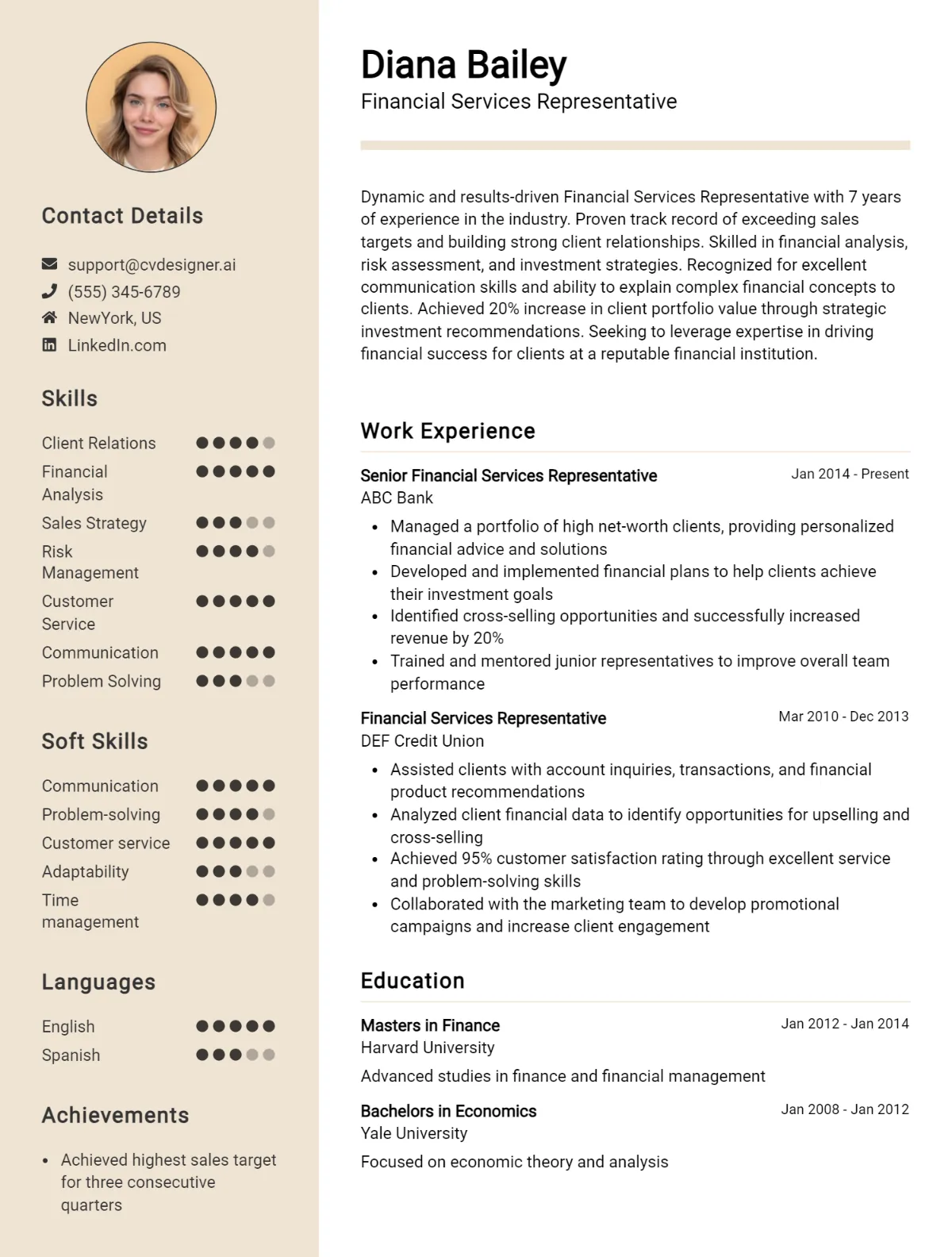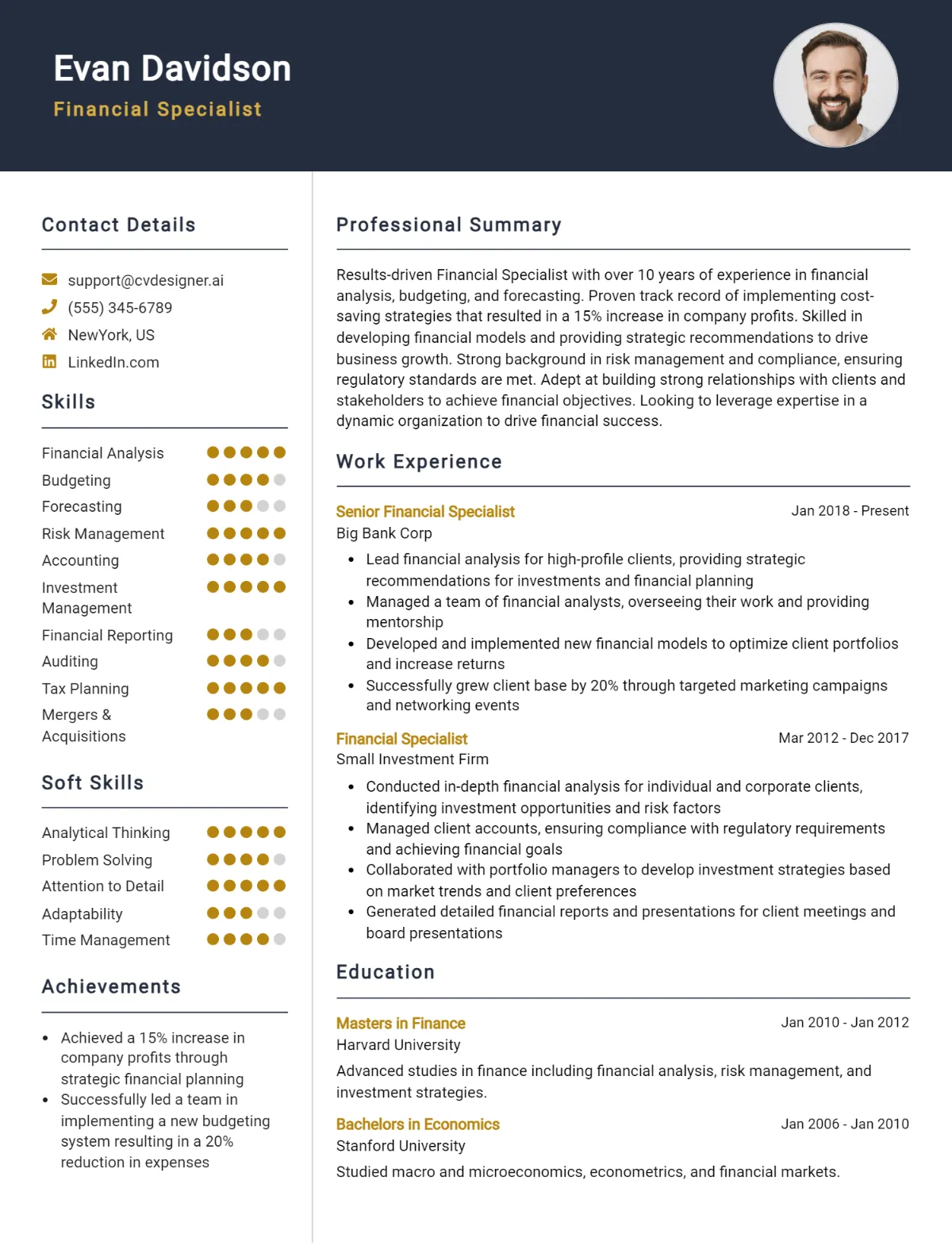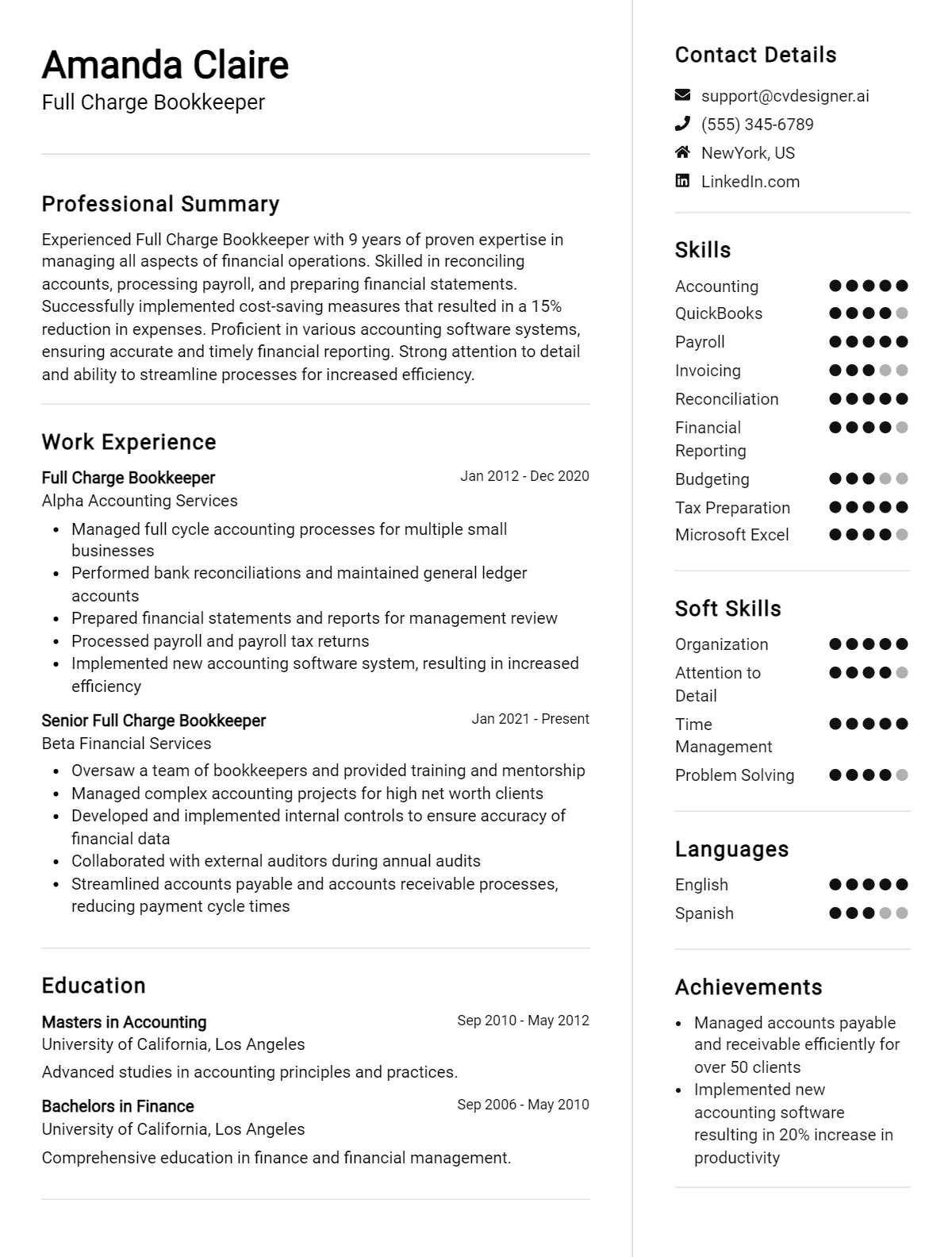The resume landscape is constantly evolving, and as we move into 2024, choosing the right format for your resume is more important than ever. Your resume is more than just a document—it’s a snapshot of your professional life, a powerful tool that can either open doors or leave them firmly shut. The format you choose dictates how your story is told, how your achievements are showcased, and how potential employers perceive you. In this comprehensive guide, we’ll explore the best resume formats for 2025, emerging trends, and how to select the perfect layout to stand out in a competitive job market.
Why Resume Format Matters
The format of your resume can have a significant impact on your job search. It’s not just about aesthetics; it’s about functionality and strategy. A well-chosen format enhances readability, ensures your resume passes through Applicant Tracking Systems (ATS), and leaves a strong first impression on hiring managers.
Impact of Format on Readability and First Impressions
A resume is often the first interaction between you and a potential employer. The format you choose determines how easily your information is digested. A cluttered, poorly organized resume can be off-putting, no matter how impressive your qualifications are. On the other hand, a clean, well-structured resume can make a powerful impression within the few seconds that a recruiter spends on it. The layout should guide the reader’s eye naturally from one section to the next, highlighting key points without overwhelming them with too much information at once.
Pro Tip: Consistency in font, spacing, and section headings enhances readability. For inspiration, check out our resume examples.
How Applicant Tracking Systems (ATS) Influence Format Choice
ATS is software that many companies use to filter resumes before they even reach human eyes. If your resume isn’t formatted properly, it might never make it past this initial screening. The ATS scans resumes for keywords, formatting consistency, and other criteria. If your resume isn’t optimized for these systems, it might be rejected before a recruiter even sees it. To navigate ATS effectively, your resume must be both visually appealing to human readers and technically optimized to meet ATS requirements.
ATS is designed to weed out resumes that don’t meet specific criteria, which means your resume could be automatically filtered out if it lacks the right format or keywords. This is why it’s crucial to ensure your resume is not only well-structured but also aligned with the language used in the job posting. Keywords related to skills, qualifications, and experience should be incorporated naturally throughout your resume to increase the chances of it being selected by the ATS.
Pro Tip: Ensure your resume is ATS-friendly by using standard fonts, clear section headings, and avoiding complex formatting elements like tables or graphics. Avoid fancy fonts, images, or unconventional layouts that might not translate well when processed by an ATS.
Trends in Resume Formatting for 2025
As we step into 2024, certain trends are emerging in resume formatting. These trends reflect the evolving expectations of employers and the increasing use of digital platforms in recruitment.
- Minimalist Design: Clean, simple layouts that emphasize clarity are becoming more popular. In 2024, there is a growing preference for resumes that are straightforward and easy to scan. This trend is driven by the need for efficiency in the hiring process, as recruiters often spend only a few seconds on each resume. Minimalist designs remove unnecessary elements and focus on the essentials—making it easier for hiring managers to identify key information quickly.
- Digital and Interactive Resumes: Interactive elements, hyperlinks, and digital portfolios are on the rise, especially in creative industries. These types of resumes allow candidates to showcase their work dynamically, providing links to portfolios, video introductions, or even interactive elements that demonstrate technical skills. As more hiring processes move online, the demand for digital-savvy resumes continues to grow.
- Keyword Optimization: With ATS becoming more prevalent, the strategic use of keywords is crucial for getting your resume noticed. This trend underscores the importance of tailoring each resume to the job you’re applying for, using specific terms that reflect the language and requirements outlined in the job description. Keywords related to job-specific skills, industry jargon, and company culture are increasingly important in ensuring your resume not only gets seen by humans but also gets past automated screening systems.
Use our Best Resume Format Templates
Discover our top-tier Resume templates, meticulously designed to make a lasting impression. Choose from a variety of professional layouts to enhance your career prospects.
Overview of the Main Resume Formats
There are three main resume formats that have stood the test of time: Chronological, Functional, and Combination. Each format serves a unique purpose and is suited to different career stages and job search strategies. Choosing the right format can significantly affect how your resume is received, so understanding the strengths and limitations of each is essential.
Chronological Resume
The chronological resume is the most traditional and widely used format. It lists your work experience in reverse chronological order, starting with your most recent job and working backward. This format highlights your career progression and is ideal for candidates with a steady work history.
Overview and When to Use It
The chronological resume is best suited for professionals with a clear career path and a strong history of relevant job experience. It’s particularly effective when you want to emphasize your most recent roles and achievements. This format is especially popular in fields like finance, education, and law, where a linear career progression is often expected. The chronological format makes it easy for employers to see your most recent experience and understand your career trajectory.
Pros and Cons
Pros:
- Highlights Career Progression: Shows growth and promotions over time, which can be particularly appealing to employers looking for candidates with a stable and advancing career.
- Familiar to Employers: Most hiring managers are comfortable with this format, making it a safe choice for most job seekers.
- Easy to Read: The straightforward structure makes it easy for recruiters to follow your career path, ensuring they can quickly identify your most recent and relevant experiences.
Cons:
- Not Ideal for Career Gaps: Gaps in employment are more noticeable and can raise questions about your stability or reliability.
- Less Emphasis on Skills: Skills may be overshadowed by work history, which can be a disadvantage if your skills are more relevant to the job than your past job titles.
- Can Be Redundant: May repeat similar duties across different roles, which can make your resume feel repetitive and less dynamic.
Pro Tip: Use bullet points to clearly list your achievements and responsibilities in each role. For guidance, explore our resume templates.
Functional Resume
The functional resume shifts the focus from work history to skills and qualifications. This format is particularly useful for those with gaps in their employment history, career changers, or individuals with diverse experiences that don’t align with a traditional career path.
Overview and When to Use It
A functional resume is best for job seekers who need to emphasize their skills over their work history. This format is ideal if you’re changing careers or have had periods of unemployment, as it allows you to highlight relevant skills without drawing attention to your work history. The functional resume is also advantageous for those entering industries that value specific skills, such as IT, where certifications and technical abilities are often more critical than a linear job history.
Pros and Cons
Pros:
- Focuses on Skills: Ideal for showcasing specific skills relevant to the job, which can be particularly useful for career changers or those entering a new industry.
- De-emphasizes Employment Gaps: Gaps in employment are less noticeable, which can help to present a more cohesive and positive narrative to potential employers.
- Flexible Structure: Allows for creativity in how you present your qualifications, making it easier to tailor your resume to different job applications.
Cons:
- Less Familiar to Employers: Some hiring managers may prefer the chronological format and might be skeptical of a functional resume, perceiving it as an attempt to hide something.
- Can Raise Questions: Lack of clear work history might prompt concerns about stability, reliability, or transparency.
- May Not Pass ATS: Some ATS may struggle with non-traditional formats, particularly if they are not optimized with the correct keywords and structure.
Pro Tip: Group your skills into categories and provide examples of how you’ve used them in different roles. For more ideas, take a look at our cv examples.
Combination Resume
The combination resume merges elements of both the chronological and functional formats. It allows you to highlight your skills and qualifications while also providing a detailed work history. This format is versatile and can be tailored to suit a wide range of career paths.
Overview and When to Use It
The combination resume is perfect for candidates who want to balance their skills with their work experience. It’s ideal if you have strong skills that are directly relevant to the job and a solid employment history that you want to showcase. This format is particularly effective for mid-level professionals who have accumulated a variety of skills but still want to highlight their career progression. It’s also useful for senior executives who need to demonstrate leadership abilities alongside a detailed work history.
Pros and Cons
Pros:
- Balanced Approach: Combines the strengths of both chronological and functional formats, providing a well-rounded view of your qualifications.
- Flexible: Can be tailored to fit various job types and industries, making it a versatile choice for many job seekers.
- Emphasizes Skills and Experience: Allows for a comprehensive presentation of your qualifications, ensuring that both your skills and work history are given due attention.
Cons:
- Can Be Lengthy: Balancing both skills and work history can lead to a longer resume, which may be off-putting to some employers if not carefully structured.
- Requires Careful Structuring: Needs to be well-organized to avoid confusion, as the combination of formats can easily become cluttered if not handled properly.
- May Overwhelm ATS: Complex formatting can be challenging for some ATS, particularly if the resume includes non-standard elements or inconsistent keyword usage.
Pro Tip: Use this format if you’re transitioning to a new industry but have transferable skills from previous roles. To start, explore our resume builder.
Detailed Breakdown of Each Resume Format
Now that we’ve covered the basics, let’s dive deeper into each resume format, exploring their structure, ideal use cases, and tips for optimizing them in 2025.
Chronological Resume
Structure and Key Components
A chronological resume typically follows this structure:
- Header: Your contact information.
- Summary/Objective: A brief statement highlighting your career goals or a summary of your qualifications.
- Work Experience: Listed in reverse chronological order, with detailed bullet points for each role.
- Education: Your academic background.
- Skills: Relevant skills that complement your work experience.
- Certifications and Awards: Any relevant accolades.
Each section should flow logically into the next, guiding the reader through your career journey. The summary or objective at the top provides a snapshot of your qualifications, setting the stage for the detailed work experience that follows. The work experience section is the heart of this format, where you can showcase your achievements and responsibilities in each role.
Example Layout:
“`plaintext John Doe
123 Main Street
City, State, ZIP
(123) 456-7890
john.doe@email.com
linkedin.com/in/johndoe
Professional Summary: Dynamic marketing professional with over 10 years of experience in brand management and digital marketing. Proven track record of increasing brand awareness by 30% and driving a 20% increase in sales within two years. Seeking to leverage my expertise at [Company Name].
Work Experience:
Marketing Manager
ABC Company, New York, NY
January 2015 – Present
- Led a team of 10 in developing and executing marketing campaigns, resulting in a 20% increase in brand awareness.
- Managed a $500,000 annual marketing budget, optimizing spend to achieve a 15% reduction in costs while maintaining campaign effectiveness.
- Developed and implemented a content marketing strategy that increased website traffic by 30% within six months.
Marketing Specialist
XYZ Company, San Francisco, CA
June 2012 – December 2014
- Spearheaded the launch of a new product line, generating $2 million in revenue within the first year.
- Analyzed market trends and customer data to identify new business opportunities, contributing to a 15% growth in market share.
- Collaborated with cross-functional teams to create and deliver integrated marketing campaigns across multiple channels.
Education:
Bachelor of Science in Marketing
University of California, Berkeley
September 2008 – May 2012
GPA: 3.8/4.0
Skills:
- Digital Marketing Strategy
- SEO and SEM
- Content Management Systems (CMS)
- Data Analysis and Reporting
- Team Leadership and Collaboration
Ideal for Candidates with a Stable Work History
This format is best suited for professionals with a consistent work history and clear career progression. It’s particularly effective for those applying for roles within the same industry, where a linear career path is highly valued. For instance, if you’re a marketing professional who has steadily advanced from an entry-level role to a managerial position, the chronological format will clearly illustrate your growth and achievements.
How to Optimize This Format for 2025
- Use Action-Oriented Language: Start each bullet point with an action verb to convey your achievements clearly. Words like “Led,” “Managed,” “Developed,” and “Implemented” are powerful and convey initiative.
- Quantify Your Successes: Whenever possible, use numbers to demonstrate your impact (e.g., “Increased sales by 20%,” “Managed a budget of $500,000”). Quantifiable achievements make your resume more compelling and credible.
- Incorporate Keywords: Ensure your resume includes keywords from the job description to improve ATS compatibility. Tailor your resume for each job application by highlighting the skills and experiences most relevant to the position.
Functional Resume
Structure and Key Components
A functional resume typically includes:
- Header: Your contact information.
- Summary/Objective: A statement that aligns your skills with the job you’re applying for.
- Skills: Grouped into categories relevant to the job.
- Work Experience: A brief, de-emphasized section at the bottom.
- Education: Your academic background.
- Certifications and Awards: Any relevant accolades.
The functional resume shifts the focus from work history to skills. The skills section is usually placed at the top, divided into categories that align with the job you’re applying for. Each category should be followed by bullet points that provide specific examples of how you’ve applied these skills in previous roles.
Example Layout:
Jane Doe
456 Market Street
City, State, ZIP
(789) 012-3456
jane.doe@email.com
linkedin.com/in/janedoe
Professional Objective: Experienced IT professional with a strong background in software development and project management. Seeking to transition into a cybersecurity role at [Company Name], where I can apply my technical expertise and passion for data security.
Core Skills:
Cybersecurity:
- Developed and implemented security protocols that reduced data breaches by 50% in 2022.
- Conducted vulnerability assessments and penetration testing to identify and mitigate security risks.
- Trained and mentored junior staff on best practices in cybersecurity.
Project Management:
- Led cross-functional teams in the successful completion of software development projects, ensuring they were delivered on time and within budget.
- Utilized Agile methodologies to streamline processes, resulting in a 20% increase in project efficiency.
- Coordinated with stakeholders to define project scope, objectives, and deliverables.
Software Development:
- Proficient in Java, Python, and C++, with experience developing scalable applications for diverse industries.
- Designed and developed a customer management system that improved client retention by 25%.
- Integrated third-party APIs to enhance system functionality, reducing development time by 15%.
Work Experience:
Software Developer
Tech Solutions, Austin, TX
March 2017 – Present
Junior Developer
Innovative Tech, Dallas, TX
June 2014 – February 2017
Education:
Bachelor of Science in Computer Science
Texas A&M University
September 2010 – May 2014
Best for Career Changers and Those with Employment Gaps
This format is ideal for job seekers who need to highlight their skills over their work history. It’s especially useful for those transitioning to a new field or with gaps in employment. The functional format allows you to emphasize the skills and qualifications that are most relevant to the job, rather than focusing on a linear career path.
Tips for Making This Format Work in 2025
- Focus on Relevance: Tailor your skills section to match the job description closely. Highlight the skills that are most in demand for the role you’re applying for, and provide examples of how you’ve used them in various contexts.
- Minimize Employment Dates: Consider omitting exact dates in the work experience section to avoid drawing attention to gaps. Instead, focus on the skills and accomplishments that make you a strong candidate for the position.
- Highlight Achievements: Even in a skills-based resume, showcasing specific accomplishments can set you apart. Include concrete examples of how your skills have led to positive outcomes in previous roles.
Combination Resume
Structure and Key Components
A combination resume generally includes:
- Header: Your contact information.
- Summary/Objective: A brief overview of your qualifications and goals.
- Skills: A detailed skills section that highlights your core competencies. Work Experience: A chronological list of your employment history.
- Education: Your academic background.
- Certifications and Awards: Any relevant accolades.
The combination resume is a hybrid of the chronological and functional formats. It allows you to showcase your most relevant skills and achievements while also providing a detailed work history. This format is particularly effective for candidates who have a strong mix of skills and experience and need to highlight both to potential employers.
Example Layout:
Michael Smith
789 Elm Street
City, State, ZIP
(234) 567-8901
michael.smith@email.com
linkedin.com/in/michaelsmith
Summary of Qualifications: Senior financial analyst with over 15 years of experience in financial planning, analysis, and reporting. Expert in developing and implementing strategic financial initiatives that drive growth and profitability. Proven ability to lead cross-functional teams and manage complex projects.
Core Competencies:
Financial Analysis:
- Conducted in-depth financial analysis for Fortune 500 companies, resulting in actionable insights that led to a 10% increase in profitability.
- Developed financial models to forecast revenue, expenses, and cash flow, supporting strategic decision-making.
Project Management:
- Led a team of analysts in the successful implementation of a new financial reporting system, reducing report preparation time by 40%.
- Coordinated with IT, operations, and senior management to ensure project milestones were met on time and within budget.
Strategic Planning:
- Collaborated with C-suite executives to develop and execute long-term financial strategies, aligning corporate goals with financial performance.
- Provided financial leadership during mergers and acquisitions, contributing to a seamless integration process and ensuring financial stability.
Professional Experience:
Senior Financial Analyst
Global Finance Corp, Chicago, IL
July 2015 – Present
Financial Analyst
Metro Bank, New York, NY
March 2010 – June 2015
Education:
Master of Business Administration (MBA)
University of Chicago, Booth School of Business
September 2007 – May 2009
Bachelor of Science in Finance
University of Illinois at Urbana-Champaign
September 2003 – May 2007
Certifications:
Certified Public Accountant (CPA), 2010
Chartered Financial Analyst (CFA), 2012
Perfect for Showcasing Both Skills and Experience
This format is versatile and suitable for a wide range of candidates, particularly those with a strong mix of skills and experience. It’s ideal for mid-level professionals and senior executives who need to highlight both their technical skills and leadership experience. The combination format allows you to present a balanced view of your qualifications, making it clear that you have both the expertise and the experience to excel in the role.
How to Effectively Use This Format in 2025
- Customize for Each Job: Tailor the skills section to highlight what’s most relevant for each application. Focus on the skills that are most in demand for the job you’re applying for, and provide specific examples of how you’ve applied them in previous roles.
- Keep It Concise: Balance the length of your skills and work history sections to maintain readability. Avoid including too much information in either section, as this can make your resume feel cluttered.
- Use Design Elements Sparingly: Stick to a simple, clean layout to ensure your resume passes ATS. Avoid overly complex formatting or design elements that could confuse the ATS or distract from the content of your resume.
Emerging Trends in Resume Formatting for 2025
As we move into 2024, several new trends are influencing resume formatting. Staying ahead of these trends can help ensure your resume is both current and effective.
Minimalist Design
The Rise of Clean, Simple Layouts
Minimalist designs are gaining popularity for their clarity and elegance. These layouts focus on white space, clean lines, and simplicity, making the content easy to read and the overall document aesthetically pleasing. The minimalist trend aligns with the increasing preference for efficiency in the hiring process, where recruiters need to quickly scan resumes to identify key qualifications. A minimalist resume removes unnecessary elements, allowing the most important information to stand out.
Balancing Aesthetics with ATS Compatibility
While minimalist designs are visually appealing, it’s important to ensure they remain ATS-friendly. Avoid using images, icons, or complex formatting that might confuse ATS. Stick to standard fonts like Arial, Calibri, or Times New Roman, and use clear section headings to organize your content. This ensures that your resume is both easy for humans to read and compatible with automated screening systems.
Pro Tip: To create a minimalist resume, use one of our resume templates that are specifically designed for clarity and simplicity.
Digital and Interactive Resumes
Increasing Use of Digital Portfolios and Interactive Resumes
In creative industries, digital and interactive resumes are becoming more common. These resumes can include links to online portfolios, interactive elements, or even multimedia content. Digital resumes allow candidates to showcase their work dynamically, providing a richer and more engaging experience for potential employers. For example, a graphic designer might include a link to an online portfolio, while a video editor could provide links to clips of their work.
When and How to Use These Formats Effectively
Use digital and interactive resumes when applying for creative roles where showcasing your portfolio or work samples is crucial. However, always provide a traditional PDF version to ensure compatibility with ATS. When incorporating interactive elements, ensure they enhance the user experience rather than detract from the content. For instance, hyperlinks should be clearly labeled and easy to click, and any multimedia content should be directly relevant to the job.
Pro Tip: Use a resume builder to experiment with different digital formats and ensure your resume is both innovative and professional.
Incorporating Keywords
Importance of Keyword Optimization for ATS
Keywords are critical for ensuring your resume passes through ATS. These systems scan for specific terms related to the job, so incorporating the right keywords is essential. Keywords are typically drawn from the job description and reflect the skills, qualifications, and experience that the employer is looking for. For example, if the job description mentions “project management,” “budgeting,” and “team leadership,” these should be included in your resume if they align with your experience.
How to Balance Keywords with Readability
While it’s important to include keywords, don’t sacrifice readability. Keywords should flow naturally within the context of your resume, not be forced into the text. To balance keyword optimization with readability, use keywords in your summary, skills section, and bullet points. For example, instead of simply listing “Project Management,” you could say, “Managed complex projects from initiation to completion, consistently delivering on time and within budget.”
Pro Tip: Refer to the job description to identify the most important keywords and phrases, then integrate them seamlessly into your resume.
Choosing the Right Format for Your Career Stage
Your career stage greatly influences which resume format is most appropriate. Here’s a breakdown of the best formats for different stages in your career.
Entry-Level Job Seekers
Recommended Formats and Tips for Recent Graduates
For recent graduates or those with limited work experience, the chronological or combination format is typically best. Focus on education, internships, and any relevant skills. Entry-level resumes should highlight any practical experience, such as internships, volunteer work, or part-time jobs, that are relevant to the job you’re applying for. Even if you don’t have much formal work experience, showcasing your skills and academic achievements can help you stand out.
- Highlight Education: If your work experience is limited, place your education section near the top. Include details about your degree, major, relevant coursework, and any academic honors.
- Include Internships and Volunteer Work: These can provide valuable experience that supports your application. Be sure to describe your responsibilities and any accomplishments in these roles.
- Use a Strong Objective: An objective statement can help clarify your goals and how they align with the job. For example, “Recent graduate with a degree in Marketing seeking to apply my skills in digital marketing and social media management at [Company Name].”
Pro Tip: Consider using a cv builder to create a polished entry-level resume that highlights your strengths.
Mid-Career Professionals
Best Formats for Those with Significant Work Experience
Mid-career professionals with several years of experience should consider the chronological or combination format. These formats allow you to showcase your career progression and key achievements. At this stage, your resume should focus on the most relevant and recent experiences, highlighting how you’ve contributed to your previous employers’ success.
- Emphasize Recent Roles: Focus on the most recent 10-15 years of your career, as this is likely the most relevant experience. Include specific achievements and responsibilities that demonstrate your expertise in your field.
- Quantify Achievements: Use numbers and metrics to demonstrate your impact in each role. For example, “Increased sales by 25%,” or “Reduced operational costs by 15%.”
- Keep It Relevant: Tailor your resume to the job, highlighting the experiences that align most closely with the position. Remove or downplay older or less relevant roles that don’t contribute to your overall narrative.
Pro Tip: Mid-career professionals can benefit from using resume examples to see how others have successfully structured their resumes.
Senior-Level Executives
How to Present Extensive Experience Effectively
Senior-level executives often have a wealth of experience that can be challenging to condense into a resume. The combination format works well for this group, as it allows you to highlight your most significant achievements while providing a detailed work history. At this level, your resume should focus on leadership roles, strategic contributions, and significant business impacts.
- Focus on Leadership: Highlight your leadership roles and the impact you’ve had on organizations. Include specific examples of how you’ve led teams, driven growth, or managed complex projects.
- Include a Summary of Qualifications: This section can quickly convey your most impressive accomplishments. For example, “Executive with 20+ years of experience in global operations, specializing in scaling businesses and driving profitability.”
- Consider a Two-Page Resume: If necessary, a two-page resume is acceptable for senior executives, but ensure every detail adds value. Focus on the most impactful achievements and responsibilities, avoiding unnecessary details.
Pro Tip: Use our resume builder to craft a powerful executive resume that effectively showcases your extensive experience.
Career Changers
Selecting the Format that Best Highlights Transferable Skills
For those changing careers, the functional or combination format is often the best choice. These formats allow you to emphasize transferable skills and downplay less relevant work experience. Career changers should focus on how their past experiences have prepared them for a new role, even if those experiences come from a different industry.
- Highlight Transferable Skills: Focus on skills that are applicable across industries. For example, project management, communication, and leadership are valuable in many fields.
- Minimize Industry-Specific Jargon: Avoid terminology that may not resonate in your new field. Instead, use language that is relevant to the industry you’re entering.
- Showcase Relevant Education or Certifications: If you’ve pursued additional education or certifications for your new career, make sure these are prominently featured. This can include online courses, bootcamps, or industry-specific certifications.
Pro Tip: Career changers can benefit from using resume templates that are flexible and easy to customize.
Common Resume Formatting Mistakes to Avoid in 2025
Even the best resume can be undermined by formatting mistakes. Here are some common pitfalls to watch out for as you prepare your resume for 2025.
Overloading with Information
Keeping Your Resume Concise and Focused
While it’s important to provide enough detail, overloading your resume with information can be overwhelming for recruiters. Stick to the most relevant details and keep your resume concise. Avoid the temptation to include every job you’ve ever had or every skill you’ve ever learned. Instead, focus on the experiences and skills that are most relevant to the job you’re applying for.
- Prioritize Key Information: Make sure the most important information is easy to find and not buried under less relevant details.
- Use Bullet Points: Bullet points help to break up text and make your resume more scannable.
- Limit Resume Length: For most professionals, a one-page resume is sufficient. However, if you have extensive experience, a two-page resume may be appropriate, but only if all the content is relevant.
Ignoring ATS Requirements
Ensuring Your Format is ATS-Friendly
Ignoring ATS requirements can mean your resume never reaches a human recruiter. Use standard fonts, avoid graphics, and incorporate keywords to ensure your resume is ATS-compatible. Remember, the primary goal is to get your resume into the hands of a hiring manager, so don’t let formatting errors prevent that from happening.
- Stick to Standard Formats: Use formats like .docx or PDF that are ATS-friendly. Avoid unusual file types that might not be processed correctly.
- Avoid Fancy Fonts and Graphics: Stick to basic fonts like Arial or Times New Roman, and avoid using images or graphics that might confuse the ATS.
- Use Clear Headings: Clearly label each section of your resume to help the ATS categorize your information correctly.
Inconsistent Design Elements
Maintaining a Cohesive Look Across Your Resume
Inconsistent fonts, spacing, or alignment can make your resume look unprofessional. Double-check your formatting to ensure consistency throughout the document. A cohesive design not only looks more professional but also makes your resume easier to read.
- Check Font Consistency: Ensure that all text is the same font and size unless intentionally varied (e.g., for headings).
- Align Text Properly: Make sure all text is properly aligned, whether left, right, or centered, depending on your chosen layout.
- Use Uniform Spacing: Ensure consistent spacing between sections and bullet points to create a clean, organized appearance.
Using Outdated Formats
Avoiding Formats that Feel Outdated or Overly Traditional
Using an outdated resume format can make you seem out of touch. Stick to modern, minimalist designs and avoid overly traditional elements like objective statements unless they add real value. While some traditional elements can still be effective, they should be used sparingly and only when appropriate.
- Avoid Dense Blocks of Text: Modern resumes use bullet points and short paragraphs to convey information quickly and efficiently.
- Embrace White Space: Don’t be afraid to leave some areas of your resume blank. White space can make your resume easier to read and more visually appealing.
- Update Old Terminology: Ensure the language you use reflects current industry standards and trends.
Pro Tip: Our resume builder can help you create a modern, polished resume that avoids these common pitfalls.
Tools and Resources for Creating a Modern Resume
Creating a standout resume in 2025 requires the right tools and resources. Here are some recommendations to help you get started.
Resume Builders
Overview of the Best Resume Builders for 2025
Resume builders can simplify the process of creating a professional resume. Our resume builder offers customizable templates that are both ATS-friendly and visually appealing. These tools often include guided prompts and suggestions, making it easier to craft a resume that highlights your strengths and aligns with the job you’re targeting.
- Ease of Use: Many resume builders are designed with user-friendly interfaces, allowing you to drag and drop sections, customize fonts and colors, and easily rearrange your content.
- Customization Options: Look for resume builders that offer a variety of templates and customization options, allowing you to create a resume that reflects your personal brand.
- Built-In ATS Optimization: Some resume builders include features that automatically optimize your resume for ATS, ensuring that your application makes it through the initial screening process.
Design Templates
Where to Find Modern, ATS-Friendly Resume Templates
Templates can save time and ensure your resume is well-structured. Explore our resume templates and cv templates for modern, professional designs. These templates are created with both aesthetics and functionality in mind, ensuring that your resume looks great and performs well in ATS.
- Professional Layouts: Choose from a variety of professionally designed templates that cater to different industries and career levels.
- Customizable Design: Templates should be easily customizable, allowing you to tailor the design to your specific needs while maintaining a professional appearance.
- ATS Compatibility: Ensure that the templates you choose are optimized for ATS, with clean layouts, standard fonts, and clearly defined sections.
Pro Tip: When using a template, always customize it to fit your unique experience and skills. Avoid using generic text or examples that don’t align with your career goals.
Online Resources
Recommended Websites and Tools for Resume Writing and Formatting
There are many online resources available to help you write and format your resume. Consider using grammar checkers, keyword optimization tools, and resume review services to refine your document. These tools can help you catch errors, improve your language, and ensure that your resume is tailored to the job you’re applying for.
- Grammar Checkers: Tools like Grammarly can help you catch typos and grammatical errors that might otherwise go unnoticed.
- Keyword Optimization: Websites like Jobscan can analyze your resume and compare it to job descriptions, helping you optimize for specific keywords.
- Resume Review Services: Consider using a professional resume review service to get personalized feedback and suggestions for improvement.
Pro Tip: For tips on formatting your cover letter, visit our cover letter format guide.
Examples of Effective Resumes in 2025
Looking at examples of successful resumes can provide valuable inspiration as you create your own. Here’s what makes these resumes stand out.
Analyzing Successful Resumes
What Makes These Resumes Stand Out in 2025
Effective resumes in 2025 are clear, concise, and tailored to the job. They incorporate keywords naturally, use a clean layout, and highlight relevant skills and achievements. These resumes are designed to be both visually appealing and ATS-friendly, ensuring that they perform well at every stage of the hiring process.
- Tailored Content: Each resume is customized for the specific job, with the most relevant skills and experiences highlighted.
- Quantified Achievements: Successful resumes use numbers and metrics to demonstrate the candidate’s impact, making their accomplishments more tangible and impressive.
- Clear Structure: Resumes with a well-organized structure and clear headings are easier for recruiters to read and understand quickly.
Key Takeaways
Lessons to Apply to Your Own Resume
- Tailor Your Resume: Customize your resume for each job application. Use the job description to identify the most important qualifications and ensure these are prominently featured on your resume.
- Use Clear Headings and Bullet Points: These make your resume easy to read and ensure that key information stands out. Bullet points are especially effective for listing responsibilities and achievements in a way that’s easy to digest.
- Highlight Achievements: Quantify your successes to demonstrate impact. For example, rather than saying you “managed a team,” say you “led a team of 10, increasing productivity by 20%.”
Pro Tip: Browse our resume examples for inspiration and ideas on how to structure your own resume.
Conclusion
Choosing the right resume format is crucial to your success in 2025. Whether you opt for a chronological, functional, or combination resume, the key is to ensure your resume is clear, concise, and tailored to the job. By staying aware of emerging trends and avoiding common pitfalls, you can create a resume that not only passes through ATS but also captures the attention of hiring managers.
As you prepare your resume, remember that the format you choose should reflect your career stage, the job you’re applying for, and your unique qualifications. Use the tools and resources available to you, including our resume builder and resume templates, to craft a resume that stands out in 2025.
With the right approach, your resume can be a powerful tool in your job search, opening doors to new opportunities and helping you achieve your career goals. Good luck!








